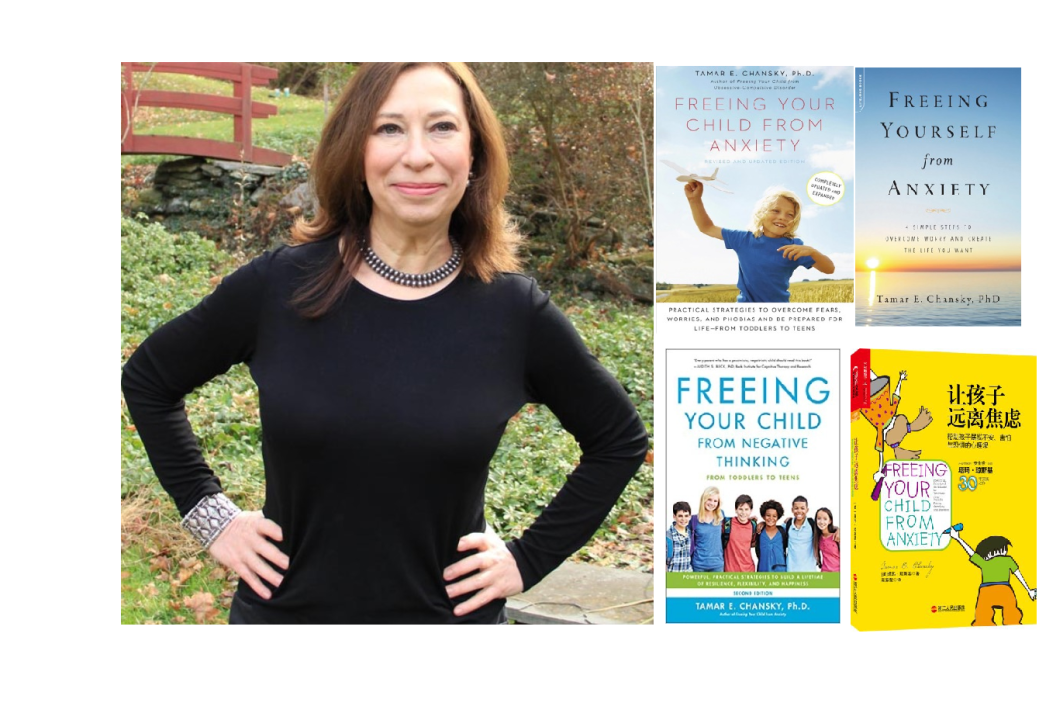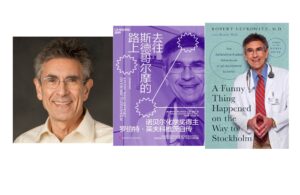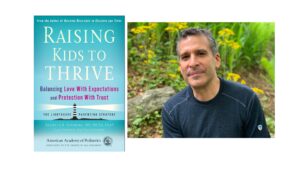My Conversation with Tama Chenski on Freeing Children from Anxiety
I had the privilege of sitting down with Tama Chenski, a renowned psychologist and author whose work has profoundly impacted the way we understand and treat childhood anxiety. Over the course of an hour and a half, we explored the depth of Tama’s insights, built from decades of clinical experience, and the invaluable lessons she shares in her book, Freeing Your Child from Anxiet 让孩子远离焦虑. Our conversation, filled with warmth and wisdom, offered not only practical advice but also deep reflections on the nature of parenting and the challenges we face in today’s fast-paced world.
Tama joined me from Pennsylvania, where she directs the Children’s Adult Center for OCD and Anxiety, a clinic she founded. Over the years, she has worked with thousands of children and families, helping them navigate the complexities of anxiety disorders. Her approach, as I discovered during our conversation, is rooted in a deep respect for the inherent wisdom children possess, combined with a practical, evidence-based understanding of how anxiety works.
Empathize and Connect is the first step
As the conversation unfolded, I found myself deeply resonating with Tama’s emphasis on empathy and connection.
“The first step is to empathize and connect with your child,“ Tama shared. “If your child is not in the optimal zone of being receptive to learning, it doesn’t matter how great the strategies are—you need a willing nervous system.”
This struck a chord with me, as I recalled my own experiences as a mother. The challenge of slowing down, setting aside our adult agendas, and truly tuning into our children’s emotional world is something I’ve grappled with personally. Tama’s words reminded me of the importance of meeting our children where they are, not just physically but emotionally, to foster a space where they feel supported and understood.
Help anxious they do fact-checking
Tama’s philosophy centers around the idea of helping children understand and challenge their anxious thoughts.
One of the most profound moments in our conversation came when she discussed the importance of “fact-checking” those worries.
She encourages parents to ask their children, “What is worry telling you about this situation?” This approach, Tama explained, helps children to separate themselves from their anxious thoughts, seeing them as external challenges rather than intrinsic parts of their identity.
As I listened, I couldn’t help but think about how often we, as parents, fall into the trap of trying to immediately soothe our children’s fears without first helping them understand and confront those fears themselves. Tama’s approach offers a more empowering path, one that teaches children to navigate their anxieties with a critical, discerning mind.
Planned discomfort makes anxiety in controlled
Throughout our discussion, Tama shared numerous practical tools that parents can use to help their children manage anxiety. One strategy that particularly resonated with me was the concept of “planned discomfort,” where children are gradually exposed to the situations that trigger their anxiety in controlled, manageable steps. As a parent, I have often found myself in situations where my instinct was to either shield my child from discomfort or push them to face it head-on.
Tama’s approach, however, advocates for a middle ground, where children are encouraged to take small, manageable steps towards confronting their fears. “What part of this do you think you could do?” Tama suggests parents ask their children, respecting their feelings and capabilities while gently guiding them towards growth.
Thinking of my own experiences, I shared with Tama how often parents, myself included, struggle with the balance between pushing our children out of their comfort zones and ensuring they feel safe and supported.
Her advice was both reassuring and enlightening. Tama reminded me—and all the parents listening—that anxiety is not just treatable but, with the right tools, children can develop new, healthier patterns of thinking that will serve them throughout their lives. “Kids with anxiety who go through skill-building learn how to do things differently on the outside, but actually their brain retains those new patterns,” she explained. This insight underscored the lasting impact of early intervention, reinforcing the importance of the work Tama does.

Even in a world with stress level unprecedentedly high, still many things can be done
Our conversation also reached the broader societal context in which anxiety operates. I mentioned the increasing pressures that children face today—from academic stress to the pervasive influence of social media. These pressures are not limited to children; parents, too, are feeling the weight of these societal expectations, often leading to heightened levels of anxiety within the family.
Tama acknowledged these challenges but remained optimistic, emphasizing that even in the face of systemic issues, parents can still exert significant influence over their children’s mental health.
“Who controls your kitchen table? We do. Who controls the conversation on the way to school? We do,” she said.
This reminder was powerful, urging us to focus on the spaces where we do have control and to create environments at home that foster resilience and well-being.
At one point, I shared with Tama the concern I hear frequently from Chinese parents, who feel overwhelmed by the pressures of an increasingly competitive educational system. Many parents feel trapped in a cycle where they must push their children to meet external expectations, often at the expense of their emotional well-being.
Tama’s response was both empathetic and practical. She acknowledged the reality of these pressures but urged parents to focus on what they can control—their relationship with their child, the tone of their home, and the conversations they choose to have. “It’s humbling to be alive,” she reflected. “There are things we wish we could change, but we can’t. What we can do is focus on our mental states, our relationships, and the environments we create.”
Her words resonated deeply with me, as I have often found myself caught in the tension between external expectations and my desire to create a nurturing, supportive environment for my own children. Tama’s advice to control what we can—our thoughts, our behaviors, our interactions—was a reminder that while we may not be able to change the world, we can create pockets of peace and resilience within it.

As we wrapped up our conversation, I felt a renewed sense of hope and purpose. Tama Chenski’s work goes beyond offering strategies for managing anxiety; it’s about fostering a mindset of fluidity and resilience in both parents and children. Her wisdom offers a beacon of light for families navigating the complexities of anxiety, reminding us that while we may not control the world, we do have the power to shape our own responses to it.
In a world that often feels overwhelming, Tama’s guidance is a vital resource for parents seeking to help their children—and themselves—navigate life’s challenges with confidence and grace. Her book, Freeing Your Child from Anxiety, is more than just a guide; it’s a testament to the power of informed, compassionate parenting, and a roadmap for creating a more resilient, hopeful future for our children.
I encourage you to catch the full interview on YouTube, where I posed a question to Tama Chenski that yielded a response worth its weight in gold (hint: her answer is really priced at $1 million)
Click below to watch the full interview on my channel on youtube:





